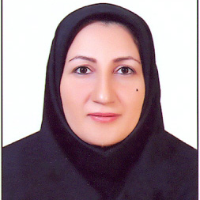Development of in vitro somaclonal drought tolerant variants of Sugarcane (Saccharum officinarum L.) using Iranian commercial varieties
Author(s):
Article Type:
Research/Original Article (دارای رتبه معتبر)
Abstract:
Introduction
Sugarcane is one of perennial industrial plants and is among the world's ten strategic products. It has a long history of cultivation and more than 75 percent of the world's sugar production accounts. The sugarcane is now cultivated in the tropical and subtropical regions as the main supplier of sugar consumed (Shoshtari et al., 2008). Drought is one of the most challenging issues of sustainable agriculture that limits the production of sugarcane. In some cases, yield losses due to drought are estimated up to 50% (Dias, 2011). As Iran is in the arid and semi-arid zones, the efficient use of water resources and strengthening the mechanisms of drought tolerance can play an important role in improving the production of crops. For this reason, achieving the varieties that have higher production power in optimum conditions and also their yield loss is negligible under stress conditions, is essential as the purpose of breeding (Fisher, 1979). Laboratory screening methods are quick and easy tests to evaluate the response of genotypes to drought stress. In recent decades somaclonal variation could enhance the ability of the plant breeder to obtain unique diversity to select varieties resistant to stress and may be obtained heritable variation (Ehsanpour, 2002). The purpose of this research is to identify somaclones that have the necessary utility in terms of yield and drought tolerance.Material and
Methods
The experiment was carried out in plant tissue culture laboratory, Department of Agricultural Research, Karun Agro industry Inc. Shushtar, Iran. To obtain somaclone variant, three commercial varieties of sugarcane in Khuzestan Province, including CP48-103, CP69-1062 and CP57-614 were selected. The shoot tips with young leaves (having apical Meristem) were collected from the fields of Karun Agro industry. Drought stress was performed on four levels (0, 25, 50 and 75 g/l of Polyethylene glycol) in MS medium. MS medium containing 3 mg/l of 2, 4‐D was prepared for callus induction and the cultures were incubated in the dark at 25 C. Growth indices were recorded during 8 weeks and then, the number of embryogenic callus was counted in each petri dish and the data were analyzed in a split-plot design. After determining the best regeneration medium for each variety, drought-tolerant embryogenic callus were transferred to the regeneration medium containing Intended amount of PEG. After regeneration, shoot apex were transferred to shooting medium (Shomeili, 2011) and after 3 to 5 times of subculture that each lasted three weeks, healthy shoots at an approximate length of 10 were transferred to rooting medium. After sufficient propagation of full-rooted seedlings, drought stress was conducted exactly similar to the callus formation stage on the basic MS medium and drought-tolerant seedlings were determined by measuring the proline content.Result and
Discussion
The results showed that studied quantitative indixes in all three varieties were affected by drought stress. Some of these characteristics such as Callus emergence induction time, Callus regeneration percentage and Shoot initiation induction time were affected by the genotype more than drought stress. In a CP48-103 variety, despite the fact that in the control (no drought stress) showed better growth indices than two other varieties, but many indices were dropped by drought stress. In this variety, Callus emergence induction time and Callus regeneration percentage was not affected by drought stress and respectively, with an average of 18.3 days of callus formation and producing 71.9 percent of regenerated callus had the best response among the studied varieties. Proline assay used to compare drought tolerance of obtained variants. The results showed that proline accumulation was greatly influenced by genotype, so that in a CP48-103 variety, at all levels of drought stress more proline was produced rather than CP57-614 variety. In general, the variants obtained from the drought stress with 50 g/L of PEG in two CP48-103 and Cp57-614 varieties had the accumulation of more proline than the variants obtained from the drought stress with 25 g/L of PEG.Conclusion
Although in this study the callus from a CP48-103 variety showed a more sensitive to drought than other genotypes, the obtained variants from this variety by producing greater amounts of proline strengthened its mechanisms of drought tolerance and this is likely to be able to better withstand environmental conditions for farming compared to his native varieties that have shown high sensitivity to drought stress, and if the other good crop conditions maintain, this variety is introduced as a new genotype. Language:
Persian
Published:
Journal of environmental stresses in crop sciences, Volume:11 Issue: 3, 2018
Pages:
481 to 489
magiran.com/p1879158
دانلود و مطالعه متن این مقاله با یکی از روشهای زیر امکان پذیر است:
اشتراک شخصی
با عضویت و پرداخت آنلاین حق اشتراک یکساله به مبلغ 1,390,000ريال میتوانید 70 عنوان مطلب دانلود کنید!
اشتراک سازمانی
به کتابخانه دانشگاه یا محل کار خود پیشنهاد کنید تا اشتراک سازمانی این پایگاه را برای دسترسی نامحدود همه کاربران به متن مطالب تهیه نمایند!
توجه!
- حق عضویت دریافتی صرف حمایت از نشریات عضو و نگهداری، تکمیل و توسعه مگیران میشود.
- پرداخت حق اشتراک و دانلود مقالات اجازه بازنشر آن در سایر رسانههای چاپی و دیجیتال را به کاربر نمیدهد.
دسترسی سراسری کاربران دانشگاه پیام نور!
اعضای هیئت علمی و دانشجویان دانشگاه پیام نور در سراسر کشور، در صورت ثبت نام با ایمیل دانشگاهی، تا پایان فروردین ماه 1403 به مقالات سایت دسترسی خواهند داشت!
In order to view content subscription is required
Personal subscription
Subscribe magiran.com for 70 € euros via PayPal and download 70 articles during a year.
Organization subscription
Please contact us to subscribe your university or library for unlimited access!


